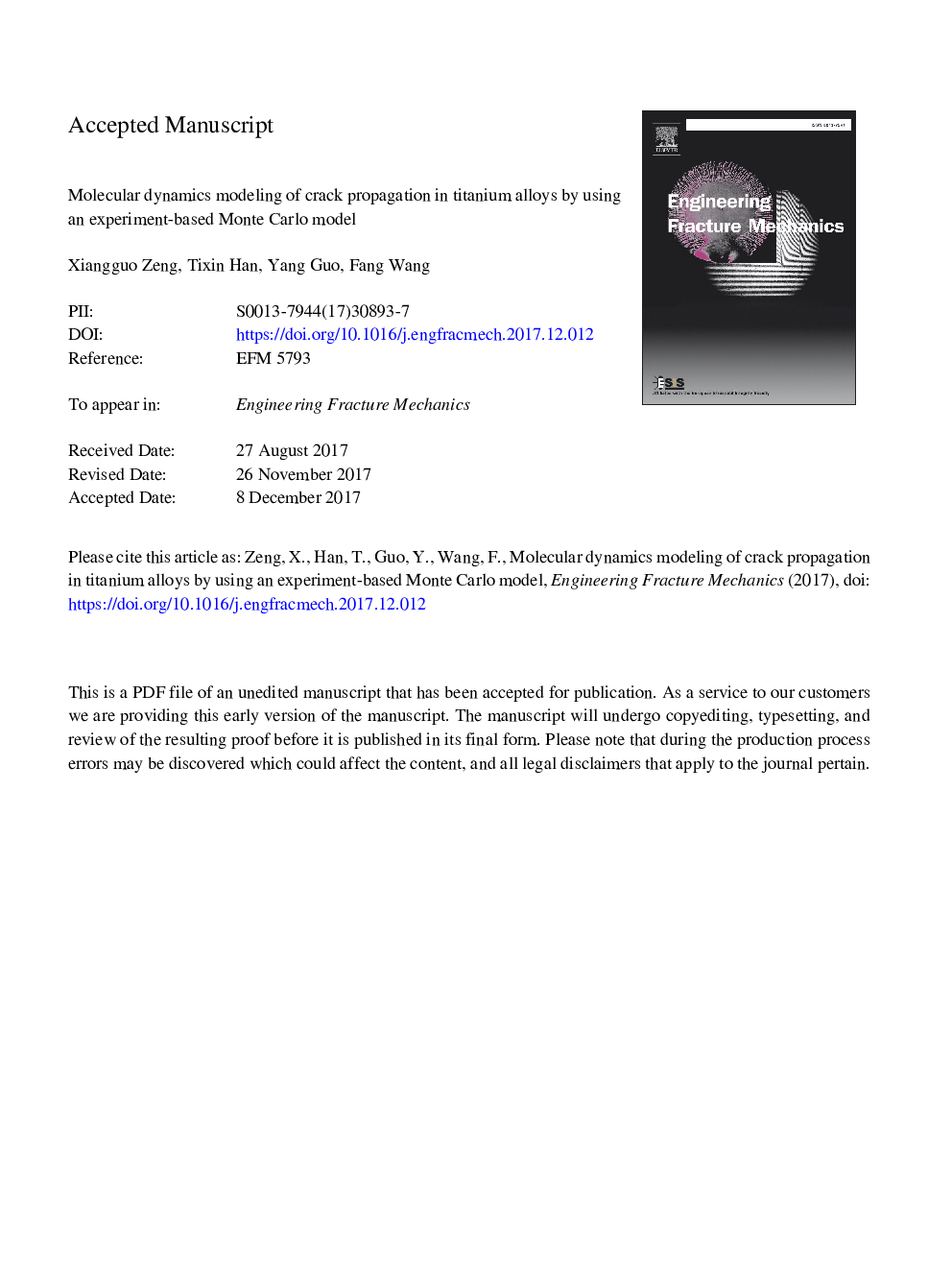| Article ID | Journal | Published Year | Pages | File Type |
|---|---|---|---|---|
| 7169069 | Engineering Fracture Mechanics | 2018 | 42 Pages |
Abstract
Based on extensive experiments at the microscopic level, it was found that the grain sizes of TA1 titanium alloys exhibited a statistical nature, and in turn, the resultant distribution was achieved by a data fit. The Monte-Carlo method was employed to obtain a model size for molecular dynamics simulations. The melting point and lattice constants of the alloys were calculated using LAMMPS software with the model dimension. A comparison of numerical results and published experimental results was presented to demonstrate that such a method provides a reasonable domain that is beneficial to molecular dynamics modeling. Afterwards, a cohesive element model along the effective simulation region was established, and then the relationship between the traction and crack opening displacement for alloys was presented. The characteristic parameters obtained from the resultant curve were utilized to embed cohesive elements, and the real-life crack propagation behavior was further mimicked through finite element analysis. The results showed that the predicted fracture toughness agreed well with the experimental data, highlighting the suitability of the new analytical approach for predicting crack growth behavior.
Keywords
Related Topics
Physical Sciences and Engineering
Engineering
Mechanical Engineering
Authors
Xiangguo Zeng, Tixin Han, Yang Guo, Fang Wang,
